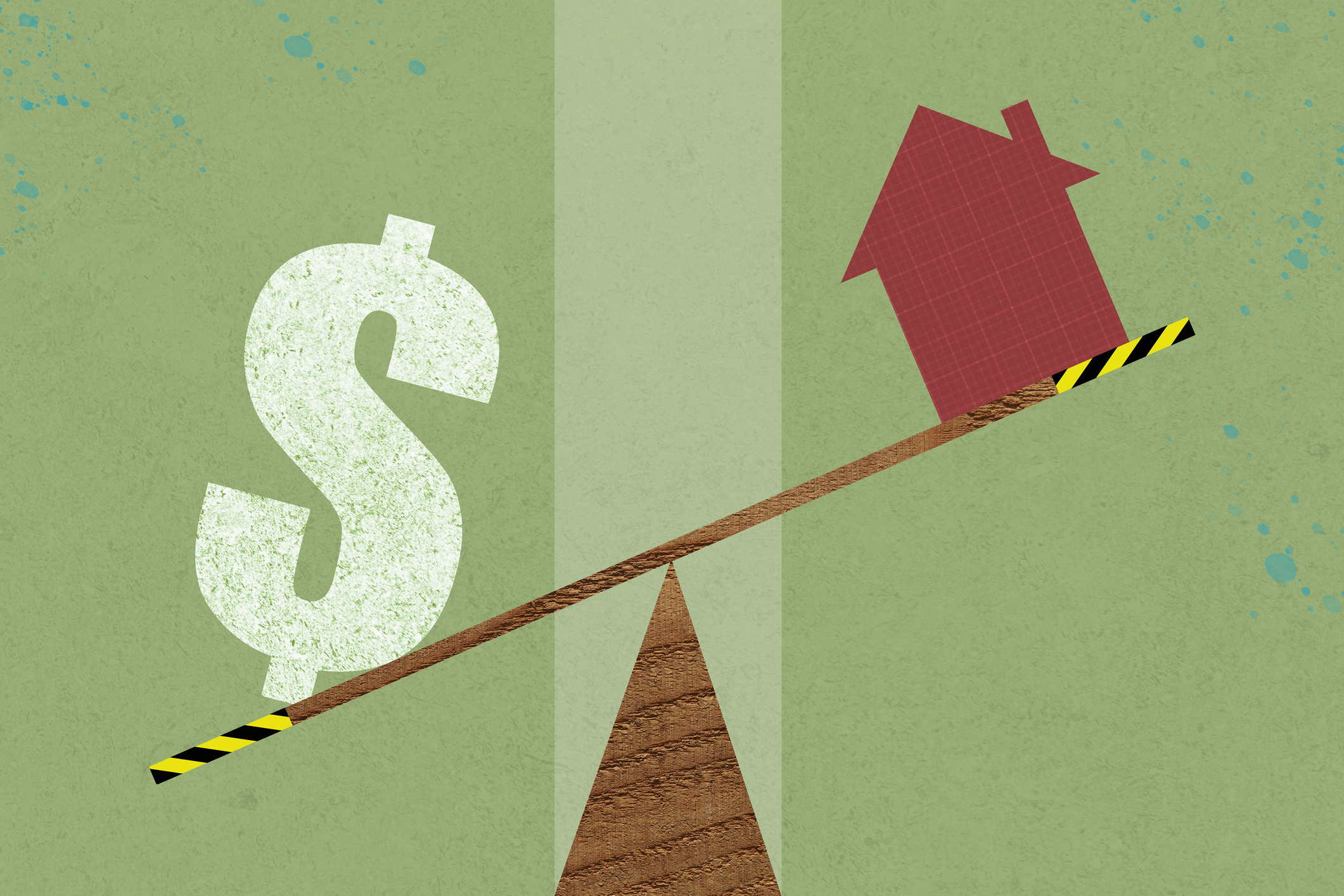Homebuyer Demand Softens Despite Lower Rates
Homebuyers continue to hold out for lower rates and more listings, economist says.


Mortgage demand declined last week even as mortgage rates decreased, according to the Mortgage Bankers Association's (MBA) Weekly Mortgage Applications Survey.
For the week ending March 22, total mortgage demand decreased 0.7% compared to the prior week, the survey showed.
“Affordability is taking a hit this spring home-buying season as high mortgage rates erode people’s budgets,” the Kiplinger Letter’s housing editor Rodrigo Sermeño said. “As a result, many potential homebuyers are waiting on the sidelines for mortgage rates to drop.”
From just $107.88 $24.99 for Kiplinger Personal Finance
Become a smarter, better informed investor. Subscribe from just $107.88 $24.99, plus get up to 4 Special Issues

Sign up for Kiplinger’s Free Newsletters
Profit and prosper with the best of expert advice on investing, taxes, retirement, personal finance and more - straight to your e-mail.
Profit and prosper with the best of expert advice - straight to your e-mail.
Joel Kan, MBA vice president and deputy chief economist, echoed those remarks in a statement.”Homebuyers continue to hold out for lower mortgage rates and for more listings to hit the market,” he said.
Mortgage demand activity was “muted” last week despite the slightly lower mortgage rates, Kan said “The 30-year fixed rate edged lower to 6.93 percent, but that was not enough to stimulate borrower demand,” he said.
The MBA forecast calls for rates to move toward 6% by the end of the year, Kan said.
Sermeño said that tight inventories continue to exert upward pressure on home prices.
“The supply of homes on the market, however, is showing signs of a recovery with the inventory of existing homes rising around 10% in February from a year ago,” Sermeño said. “Lower rates later this year and higher inventory of homes should help sales in the coming months.”
A March 25 report by the U.S. Census Bureau showed that the median new home sale price in February was $400,500, a decrease of 3.5% from January and a decrease of 7.6% from the same period a year ago.
“A slight uptick in mortgage rates held back the pace of new home sales in February,” Robert Dietz, National Association of Home Buildings (NAHB) chief economist, said in a statement.
“Our latest builder surveys show that roughly one-quarter of builders reported cutting home prices in March,” Dietz said. “The price cuts, in combination with building slightly smaller homes, can be seen in today’s data that show a 7.6% year-over-year decline for median new home prices.”
(Story continues below)
Mortgage application highlights
The Market Composite Index, which measures mortgage loan application volume, decreased 0.7% on a seasonally adjusted basis from the prior week, and decreased 0.4% on an unadjusted basis, MBA said.
The Purchase Index decreased 0.2% on a seasonally adjusted basis, compared to the prior week. On an unadjusted basis, the index increased 0.2% from the prior week and fell 16% from the same week a year ago.
The Refinance Index, which measures refinancing and prepayment activity, decreased 2% from the prior week and was 9% lower than the same week a year ago. The refinance share of mortgage activity decreased to 30.8% of total applications from 31.2% the previous week.
The FHA share of total applications decreased to 12% from 12.1% the prior week. The VA share decreased to 12%, from 12.1% in the week prior, and the USDA share remained unchanged at 0.5% from the prior week.
Related Stories
Profit and prosper with the best of Kiplinger's advice on investing, taxes, retirement, personal finance and much more. Delivered daily. Enter your email in the box and click Sign Me Up.

Joey Solitro is a freelance financial journalist at Kiplinger with more than a decade of experience. A longtime equity analyst, Joey has covered a range of industries for media outlets including The Motley Fool, Seeking Alpha, Market Realist, and TipRanks. Joey holds a bachelor's degree in business administration.
-
 How to Safely Open an Online Savings Account
How to Safely Open an Online Savings AccountOnline banks offer generous APYs that most brick-and-mortar banks can't match. If you want to make the switch to online but have been hesitant, I'll show you how to do it safely.
-
 7 Ways to Age Gracefully Like the Best Stock Photo Seniors
7 Ways to Age Gracefully Like the Best Stock Photo SeniorsAs a retirement editor, I've gleaned valuable wisdom (and a lot of laughs) from one older couple that tops the seniors' stock photo charts.
-
 My First $1 Million: Banking Executive, 48, Southeast U.S.
My First $1 Million: Banking Executive, 48, Southeast U.S.Ever wonder how someone who's made a million dollars or more did it? Kiplinger's My First $1 Million series uncovers the answers.
-
 Is Fear Blocking Your Desire to Retire Abroad? What to Know to Turn Fear Into Freedom
Is Fear Blocking Your Desire to Retire Abroad? What to Know to Turn Fear Into FreedomCareful planning encompassing location, income, health care and visa paperwork can make it all manageable. A financial planner lays it all out.
-
 How Much Income You Really Need to Afford a $500,000 Home
How Much Income You Really Need to Afford a $500,000 HomeAs home prices increase, the income needed for a house is also climbing. We break down what you need to earn to afford a $500,000 home.
-
 How Much Would a $50,000 HELOC Cost Per Month?
How Much Would a $50,000 HELOC Cost Per Month?Thinking about tapping your home’s equity? Here’s what a $50,000 HELOC might cost you each month based on current rates.
-
 Should You Tap Your Home Equity Before 2026?
Should You Tap Your Home Equity Before 2026?As borrowing rates and tax law shifts converge, here's what homeowners need to know before pulling equity out of their home.
-
 11 Cities With the Cheapest Groceries in the US
11 Cities With the Cheapest Groceries in the USIf you live in one of these 11 cities, you're paying less than the rest of the country to keep your fridge stocked.
-
 My $1.2 Million Vacation Home Has a $360K Mortgage. I Don't Need My Upcoming $45K RMD. Should I Use It to Pay Down the Mortgage?
My $1.2 Million Vacation Home Has a $360K Mortgage. I Don't Need My Upcoming $45K RMD. Should I Use It to Pay Down the Mortgage?We asked wealth planners for advice.
-
 5 Simple Fixes to Save on Heat Bills This Winter
5 Simple Fixes to Save on Heat Bills This WinterWith fuel prices expected to rise 10% or more this winter, making your home more energy efficient will really pay off.
-
 5 Charming Small Towns Where America's Wealthy Retire
5 Charming Small Towns Where America's Wealthy RetireDiscover 5 small communities in the U.S. for affluent retirees — where charm outweighs the cost.